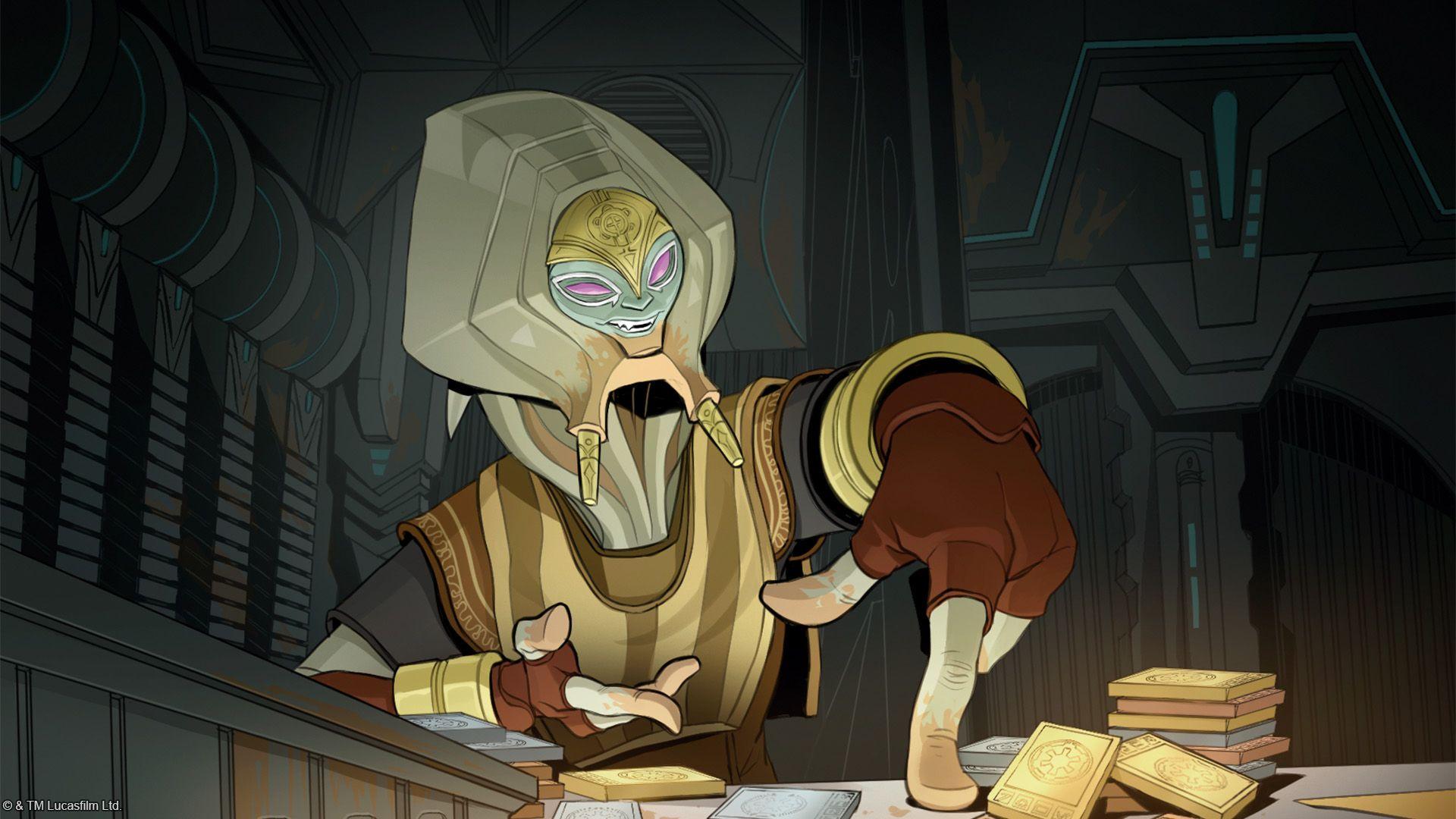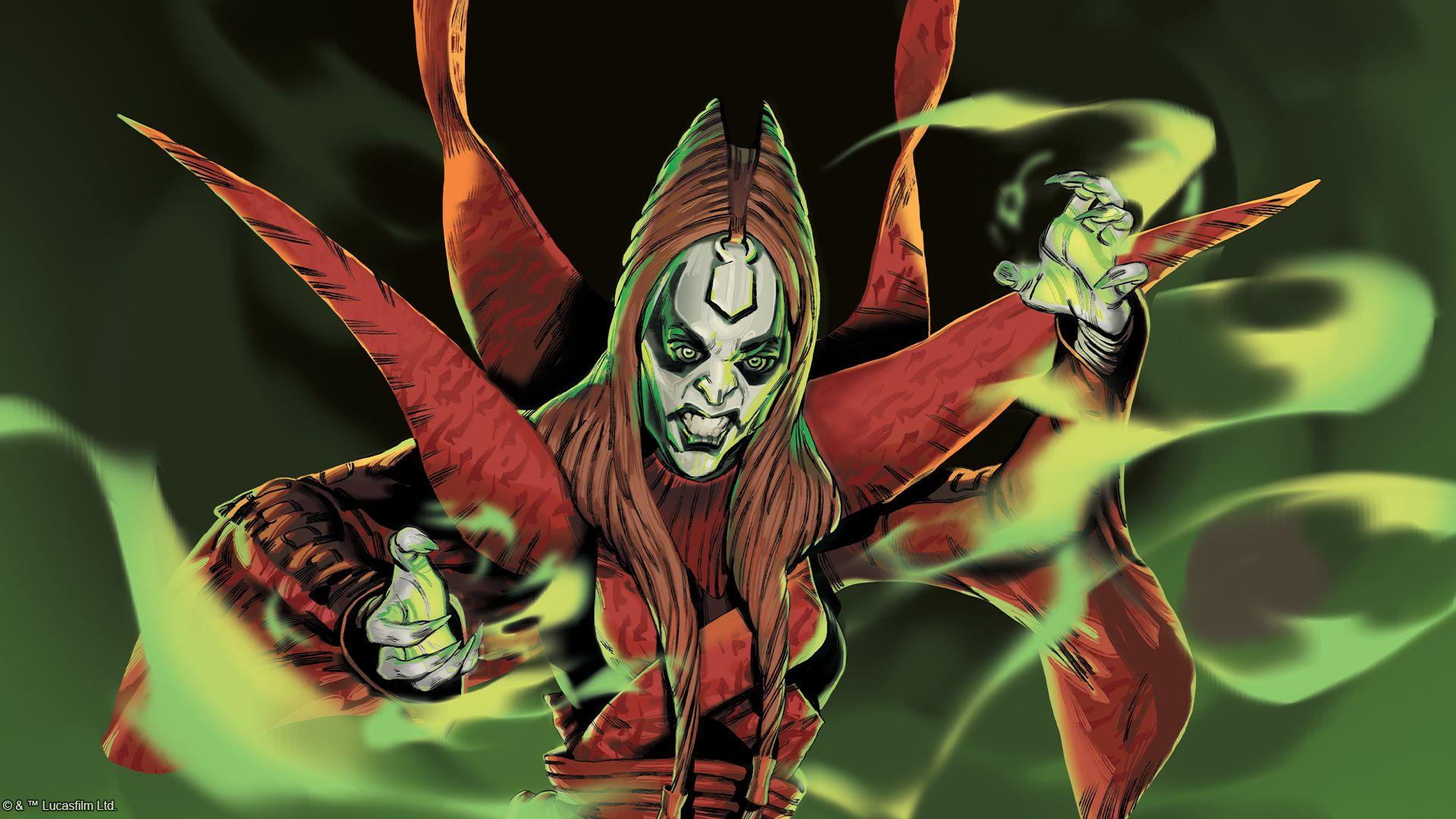Built by the Masters

The launch of Star Wars™: Unlimited is just a few months away! As we look forward to the game’s release, we decided to ask Danny Schaefer, Tyler Parrott, and Jeremy Zwirn—the designers of the game’s first set, Spark of Rebellion—to talk about some of their favorite decks that they built during playtesting.
Let’s take a look at what they have to share!
Danny Schaefer: Han Solo Aggression

This deck is an explosive, high-synergy midrange/tempo deck that aims to maximize Han Solo’s (Spark of Rebellion, 17) leader ability. The deck gives up cards for extra resources in the early game, hoping to build a board advantage and get off to a fast start. In the midgame, the deck recoups that card disadvantage by playing powerful 6 and 7 cost units ahead of schedule. Ideally, the deck can adapt to either take an aggressive role against slower decks or play a more controlling game against fast opponents.
The major strength of this deck is its potential for explosive plays. In the best-case scenarios, the deck can put a 7-drop Mace Windu (Spark of Rebellion, 149) or Han Solo (Spark of Rebellion, 198) unit into play as early as round 3 and completely dominate the ground arena. And even when it’s not doing that, the deck can regularly play those cards on round 5—or simply get a major early-game edge by playing a combined 7 resources worth of units in the first two rounds. And if you play against a more controlling opponent, this deck has lots of ways to deal damage out of nowhere in the late game between the Millennium Falcon (Spark of Rebellion, 193), Mace Windu, For a Cause I Believe In (Spark of Rebellion, 152), and K-2SO (Spark of Rebellion, 145).
The deck’s weakness is consistency—there are a lot of neat combos, but sometimes you draw You're My Only Hope (Spark of Rebellion, 246) with no payoffs, or draw into the more controlling side of your deck when you really need an aggressive start.
Early iterations of this deck were more combo-focused, with more expensive units and more ways to cheat those cards into play, like a particular event that we won’t spoil today. I even briefly toyed with a Command version that ran Resupply to get 7-drops into play even faster! Ultimately the deck ran more smoothly by trimming some of those elements in favor of more consistent aggressive cards.
The reason I love this deck is that it’s so full of combos and overlapping synergies, so strap in while I dive into several of my favorites:
Han’s ability allows you to play both R2-D2 (Spark of Rebellion, 236) and C-3PO (Spark of Rebellion, 238) on round 1, immediately recouping the card disadvantage and setting you up to draw more cards in the next round. And while the droids aren’t too threatening on their own, following them up with Red Three (Spark of Rebellion, 144) can turn them into meaningful attackers.
Ezra Bridger (Spark of Rebellion, 192) operates in a similar space as a round 1 play that can quickly start replacing the cards that Han uses as resources.
R2, C-3PO, and Ezra all allow you to look at the top card of your deck, which is great for setting up You’re My Only Hope. In a perfect world, one of those cards shows you Black One (Spark of Rebellion, 147) on top of your deck on round 2 and you can immediately play it with Han’s ability plus You’re My Only Hope, refilling your hand while putting a 4/4 Space unit into play.
But perhaps the best setup for You’re My Only Hope is For a Cause I Believe In. One of the best lines in the deck is playing it on round 2 to dig 4 cards deep looking for a 7-drop like Mace or Han, then leaving that card 3rd from the top so you can hit it off You’re My Only Hope on the following round.
Regardless of how the early game plays out, the deck always wants to aim for an explosive round 4 by leveraging Han’s deploy. You should begin the round with 5 resources in play and at least 2 cards in hand, one of which is a Mace or Han unit. Use leader Han’s ability to go up to 6 resources, then deploy him and attack to go up to 7 resources, allowing you to play your 7-drop two rounds ahead of schedule and likely take full control of the ground arena!
And of course, no Han deck is complete without the Millennium Falcon. The cards work perfectly together, with Han allowing you to play the Falcon on round 1, then get double use out of your extra resource by paying the Falcon’s tax before you lose the resource at the start of the next action phase. Between the Falcon, Red Three, and Green Squadron A-Wing (Spark of Rebellion, 141), you have the potential to launch a devastatingly fast space attack that will catch many opponents off-guard.

Tyler Parrott: Vader’s Legion

I’ve always had a fondness for assembling armies in my games. When playing previous Star Wars games, I would often design a deck filled with Trooper units (usually stormtroopers, since the Empire has so many) and give it a shot. How effective could my army of soldiers be? So, once it was my turn to make a game, I wanted that deck archetype to at least have some meaningful strength behind it. To that end, here is my Trooper deck, using multiple trait-based payoffs to try to pile damage on the opponent’s base as fast as possible.
The Darth Vader (Spark of Rebellion, 10) leader takes command of a Trooper legion in this aggressive midrange deck. The primary plan is to maximize General Tagge (Spark of Rebellion, 80) as an aggressive source of stats; you do this by playing some low-cost Trooper units and then deploying Tagge to make them all stronger and harder to kill. Because some of the strongest aggressive units available in the first set are payoffs for being Imperial or Rebel, the aggressive Imperial payoffs—General Veers (Spark of Rebellion, 230) and TIE Advanced (Spark of Rebellion, 231)—are also included. Several cards in the deck are somewhat interchangeable as low-cost Imperial and Trooper units, and the plan is to put as many on the board as fast as possible so they can be larger than the enemy units as they attack the base.
This deck has a few memorable quirks. One of them is thematic: Benthic "Two Tubes" (Spark of Rebellion, 156) and Partisan Insurgent (Spark of Rebellion, 159) are low-cost Trooper units that are super on-strategy for the deck, but since they’re also Rebel units they often get funny looks from opponents when they fight alongside the Dark Lord of the Sith. Another quirk is mechanical: it’s an aggressive swarm deck that also wants to get to 7 resources to deploy its leader. This actually required some deckbuilding adjustments, as the need to keep resourcing (to deploy Vader) works against the gameplan of playing a swarm of cheap units. This is specifically why the deck plays I Am Your Father (Spark of Rebellion, 233) and a single Grand Moff Tarkin (Spark of Rebellion, 84) as ways to refill the hand when it runs out in the mid-game.
While other decks might play this deck with Grand Moff Tarkin (Spark of Rebellion, 7) as its leader, I’ve found Vader to be more effective (as well as a more fun theme for me, personally). Heroic aggressive decks often play Sabine Wren (Spark of Rebellion, 14) to make sure the opponent can’t stabilize thanks to her consistent direct damage. Darth Vader does the same thing in this deck. Since so many of the cards are cheap, you can often use Vader to add damage to the enemy base and put them on a clock that forces the game to end (usually in your favor). Additionally, the damage Vader deals to units means that when your opponent takes out your units, you can finish their attackers off and prevent them from building a board presence while you deploy your next wave. Having a 5-power unit that enters ready on round 6 means that very often the opponent is able to stabilize and take out all of my Trooper units…just for Vader to march in at the very end and finish them off with one big attack.
The non-unit cards in the deck are mostly focused on getting damage through or turning the tide of a race. Force Choke (Spark of Rebellion, 139) and Imperial Interceptor (Spark of Rebellion, 132) help defend against the opponent’s board presence; Keep Fighting (Spark of Rebellion, 169) can get an unexpected attack in; and Precision Fire (Spark of Rebellion, 168)—a card I put a lot of effort into designing both for the ironic title and the effective power level—allows a Trooper to efficiently deal a lot of damage very fast, even through a Sentinel defender. This deck may not be the strongest deck in the metagame, but it’s thematic, very effective with a good pilot, and it’s entirely made of commons and uncommons!

Jeremy Zwirn: Double-Cunning Boba Fett

This is a tempo deck that plays aggressive units to put pressure on your opponent while slowing them down by exhausting and returning units to their hand. The Boba Fett (Spark of Rebellion, 15) leader can ready resources, which allows you to outpace your opponent by playing more cards quicker. This deck also has hand disruption with Cunning (Spark of Rebellion, 203) and Bodhi Rook (Spark of Rebellion, 201), and discarding a key card from their hand can swing games in your favor. In general, with this deck, you want to attack your opponent’s base instead of their units, then exhaust their units so they can’t attack your units or outrace you. If need be, this deck can fight for board control as well with cards like Jedha City (Spark of Rebellion, 28), Boba Fett (Spark of Rebellion, 179), Shoot First (Spark of Rebellion, 217), and multiple units with Shielded.
The strength of this deck is that it’s fast and consistent. It can threaten both the ground and space arena. Cards like Cunning and No Good to Me Dead (Spark of Rebellion, 186) give this deck the tools to outpace aggro decks. However, the deck isn’t built for the late game, so control decks with lots of removal and Sentinel units can put up a good fight.
Much of this deck has remained the same since its first iteration. Originally, the deck was more midrange with a higher cost curve, but I wanted to curve it out and utilize the resources Boba readies more consistently, so I added some cheaper units.
Some of my favorite openings with this deck is first turn Viper Probe Droid (Spark of Rebellion, 228) into second turn Bodhi Rook, or double TIE/ln Fighter (Spark of Rebellion, 225) turn one with General Veers (Spark of Rebellion, 230) turn two.
As development wraps up for each set, we do one or two employee tournaments as a fun way to play what we think may be some of the strongest decks from that set. For the first of these tournaments, I went undefeated with a version of this deck. The deck performed so well that we ended up nerfing multiple cards after the tournament.
If I had to sum up the “vibe” of the deck in a single word, it would have to be: Disintegration.

Share This Post



